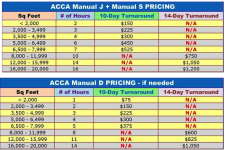truckdiagnostics
Platinum Member
CO generation? You run a generator to make electricity, sell it back to the power company and use the heat from the engine to make hot water in your plant. Mini splits up here don't make as much sense as they do down south. You just can't beat forced air gas heat. With that said good refrigeration techs up here are hard to come by.Thing is, if you use a mini split for a whole house with a multi zone, you should use refrigeration ball valves on both liquid and suction line to each head, so if a head needs to be serviced, you can keep running the system while the system is being serviced. Reality is, 98% of those getting multi zone systems never get those ball valves because they are very expensive (2 per each indoor head).
At the end of the day, a condensate pump for a mini split is 6 times more expensive than a conventional condensate pump. When you go multi zone with 4-8 heads, if you want to do it right, there is a crap load of money just for prevention of issues.
Honestly, as far as fixing, go to any manufacturers website for dealers to service the equipment, and you should be good to go. 20 years ago I knew a guy who wouldn't touch them. Now he's actually pretty good at it. Anything new, people are afraid of, but mini split inverter systems we're being sold when I got into the industry close to 30 years ago, and they are here to stay.
The reality is with mini splits being tied business wise to American unitary split products, you'll see more of these in the future (think gas furnace with coil, being abled to be tied into a mini split outdoor unit along with other indoor heads). That's where the market is going in the next 20 years.
FYI - R22 is no longer to be produced or imported in the US as of the beginning of this year. Starting in 2023, R410 equipment manufacturers can no longer make equipment which uses R410A (including mini splits). Another 20 years after that, perhaps R410A will be illegal. Point being, put yourself in the manufacturers shoes and it's a no win situation.
Changes in HVAC for office building is going to be interesting as now they want more outside air changes. That is going to bring a lot of most warm air into the building.
From what I am getting from the kid is they are using a heat pump and cooling towers on the roof. In the winter getting the air changes is pretty simple, how do you do that in the summer and how do you do that with a mini split.

